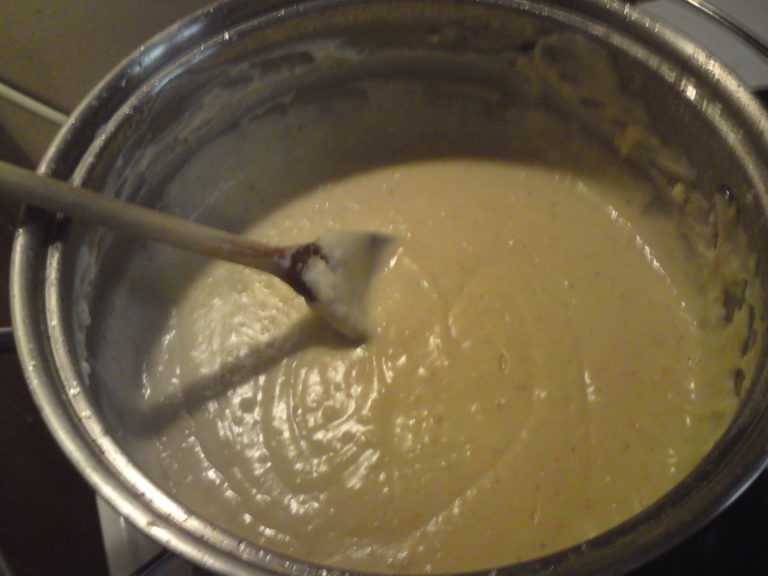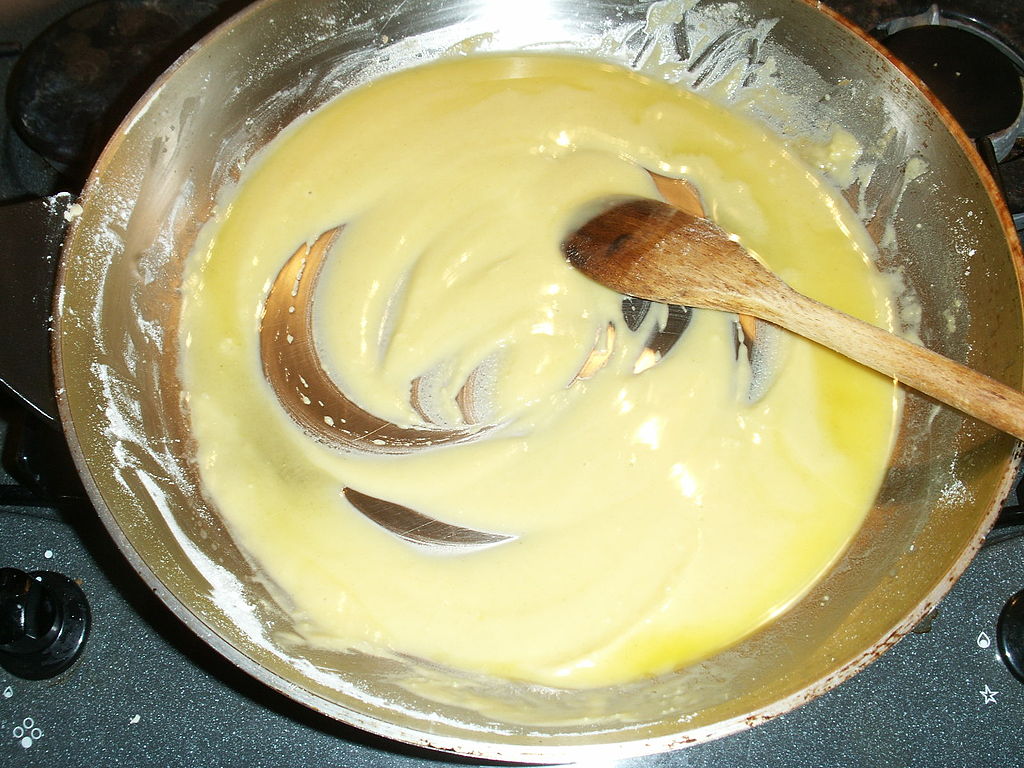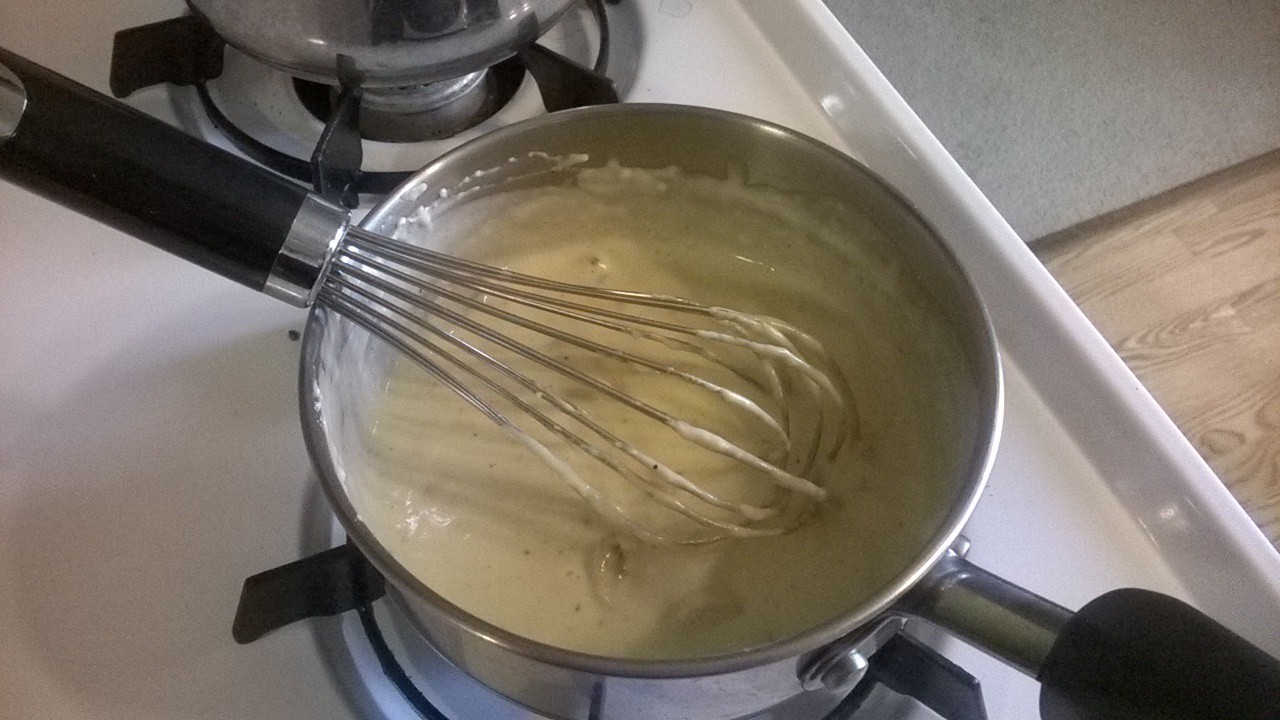
Roux’s and béchamel’s, it’s quite possible that you haven’t heard either of these words. Most commonly they’re used in a professional kitchen, or maybe you’ve heard them get thrown around in your favorite Food Network show. Even though the words possibly seem unfamiliar, you have for sure tasted what they can do.
Roux’s and béchamel’s are staples in any kitchen. Rooted in French cuisine, they are the foundation to a number of different known dishes. There’s often confusion between the two, so, let’s go over exactly what they are and how to use them to your culinary benefit.

Roux
A roux is a base to a sauce, soup, etc. It is used as a thickening agent for that velvety creamy texture you’d associate with a mushroom sauce or a clam chowder soup.
A roux is made with two simple ingredients; butter and flour. When making a roux you’ll want to melt down your butter in a saucepan, make sure to melt it gently on low as butter cannot tolerate high temps and will brown incredibly fast. After your butter is completely melted you add in roughly an equal amount of flour. I personally, will use a 2:3 ratio, with butter remaining dominate in the roux. Keep in mind this is entirely up to your preference of the dish, the less flour you use the thinner your sauce, soup, etc. consistency will be, and of course, the more flour you use, the thicker it will get.
You want to keep the temp low and make sure the flour absorbs all the butter, it should look almost pasty and become thick pretty quickly at this point. This butter and flour paste you now have is a roux. This simple combination of ingredients helps to stabilize a multitude of different dishes and is vital in so many of our favorite foods; mac n cheese, alfredo sauce, lasagna, and the list can go on.
Okay, so a roux’s important, but what exactly is a béchamel?
Roux’s and béchamel’s are actually two of the same, a small addition propelling the dish forward is what changes it into a béchamel. Let’s go over this.

Béchamel
A béchamel begins the same as a roux does, a roughly equal ratio of butter to flour. One small addition changes it into a béchamel; milk. At this stage you should be looking down into your saucepan at a pasty pale-yellow mixture of butter and flour, once you add your dairy (cream, milk, even milk alternatives can work if you’re finessed in the kitchen) this dairy will break up the flour and butter and become the base of the sauce, think a clean canvas to whatever saucy art work you can throw at it.
This stage is important because the béchamel needs to cook down enough for it to hold and stabilize so it will not split. Keep in mind that this cannot be left alone! A béchamel needs constant movement (a whisk is your friend here) or else a film will develop and texturally remain in the sauce. Also be mindful to scrape down the edges of the pan to avoid any solidified parts that can get into your sauce. When you want to see if it’s done cooking there’s a great way to do so.
The tried and true method is to dip a flat spatula or wide spoon into the béchamel, swipe your finger down the spoon/spatula and tilt it to its side. If the line of your finger stays intact, as in the sauce doesn’t drip down and cover the open space of the spoon, your sauce is done. What we’re looking for with a béchamel is if it can hold on its own, flour is a stabilizer and the béchamel needs to be cooked down enough for the flour to do its job in the finalization of the dish.
At this point after the milk has been added, you can do anything imaginable with this sauce! You can add some cheese and make a mac n cheese, maybe add some spices and herbs and layer over a bed of vegetables before you throw it in the oven. You could add some mushrooms and red wine, reduce and pair it with a fatty cut of steak for a delicious steak sauce. Endless possibilities when you use these famous French methods, try giving them a shot, once you master the make you’ll be able to do so much with it, have fun experimenting!